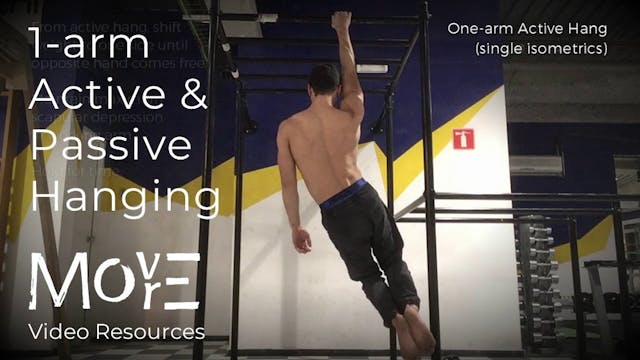Overhead (OH) shoulder ROM and stability routine
Shoulder-mobility (range-development)
•
6m 0s
THE WHAT:
A basic overhead (OH) shoulder-stabilisation and range-of-motion (ROM) sequence to help keep your shoulders in their sockets. For those who are extremely hyper-/flexible, working with rotations WITHIN the end-ranges will help to build STRENGTH there (ie. 'stability' in this context') toward "closing off" ranges in which subluxation or even dislocation can occur.
LEARN MORE (subscriber-only):
https://drive.google.com/file/d/1qG1koEg49cxmPscGuUD_7W61QihjZWYs/view?usp=drive_link
______________________________
For programming, guidance, & support for your physical practice:
FREE fundamental prehabilitation program: https://www.movemoremp.com
Online Support (1 to 1 coaching): https://movemoremp.com/onlinesupport
Elements (standardised programs): https://www.movemoremp.com/elements
[email protected]
Up Next in Shoulder-mobility (range-development)
-
Fundamental hanging contexts
THE WHAT & HOW:
A simple reason for the perspective and practice of hanging is that, as with the fundamental resting or 'passive' squat, it is a movement pattern built into our physiology which becomes not only neglected, but culturally & socially discouraged as we become adults.The disuse of s...
-
1-arm 'passive' & 'active' hang
THE WHAT & HOW:
The two ends of the overhead-pulling kinetic chain are the hands (connecting the arms to the anchor-point), and the scapulae (connecting the arms to the body). Developing the 'Passive' and 'Active' hang unilaterally (i.e. 1-arm), follows the same progression perspective as bilater... -
Culturing movement habits: Hanging at...
THE WHAT:
Hanging is a movement habit that requires culturing. The benefits of regular hanging are many, but primarily related to decompression of the shoulder & improving the quality of its connective tissues and identifying & releasing excessive resting muscle tone around the lumbar spine.For...



